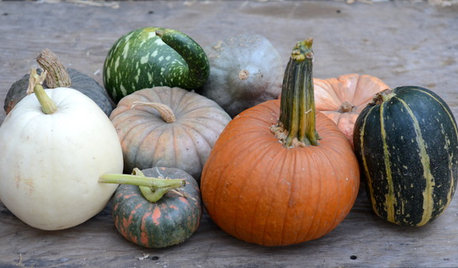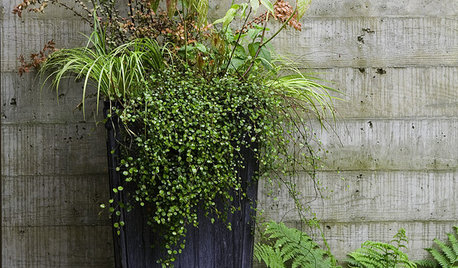annual squash vine borer post
MiKru
9 years ago
Related Stories

EDIBLE GARDENSSummer Crops: How to Grow Squash
Almost foolproof and with cheerful flowers, squash comes in a wide range of varieties to plant in spring
Full Story
FARM YOUR YARDHouzz Call: Home Farmers, Show Us Your Edible Gardens
We want to see where your tomatoes, summer squashes and beautiful berries are growing this summer
Full Story
GARDENING GUIDESJoin Us for a Parade of Pumpkins
Fall eye candy: Get to know 9 winter squash varieties, including Long Island Cheese and Blue Hubbard
Full Story
GARDENING GUIDES10 Easy Edibles for First-Time Gardeners
Focus on these beginner-friendly vegetables, herbs, beans and salad greens to start a home farm with little fuss
Full Story
EARTH DAY5 Ideas for a More Earth-Friendly Garden
Consider increasing the size of garden beds, filtering rainwater and using plants to reduce energy use
Full Story
GARDENING GUIDESLessons in the Rewards of Selfless Gardening
Let go of gardening for your own vision and watch the garden’s own true vision come forth
Full Story
GARDENING GUIDESWhat Are Your Spring Gardening Plans?
Tearing out the lawn? Planting edibles? Starting from scratch? Tell us what you plan to change in your garden this year
Full Story
GARDENING AND LANDSCAPINGGive Your Compact Patio Some Major Style
11 ideas and examples to take your outdoor room from snoozefest to stellar
Full Story
GARDENING GUIDESTexas Gardener's May Checklist
Be especially water wise this month as you sow seeds, tend to your lawn and plant edibles, grasses and flowers
Full Story
GARDENING GUIDESThe Secret Formula for Grouping Plants in a Pot
Designing a gorgeous container garden is easy once you know this simple rule of thumb for composition
Full Story





alabamanicole
drippy
Related Professionals
Windham Landscape Architects & Landscape Designers · Eden Prairie Landscape Architects & Landscape Designers · Harrison Landscape Architects & Landscape Designers · Salem Landscape Architects & Landscape Designers · Edmond Landscape Contractors · Desert Hot Springs Landscape Contractors · Hampton Bays Landscape Contractors · Hayward Landscape Contractors · Shaker Heights Landscape Contractors · Tehachapi Landscape Contractors · Woodbury Landscape Contractors · Annapolis Siding & Exteriors · Baltimore Siding & Exteriors · St. Louis Siding & Exteriors · Oakville Siding & Exteriorskolet66
MiKruOriginal Author
elfs_garden
MiKruOriginal Author
elfs_garden
topsiebeezelbub
yolos - 8a Ga. Brooks
trickyputt
trickyputt
Candace Seaton
trickyputt
davemct
rhizo_1 (North AL) zone 7
trickyputt
davemct
trickyputt